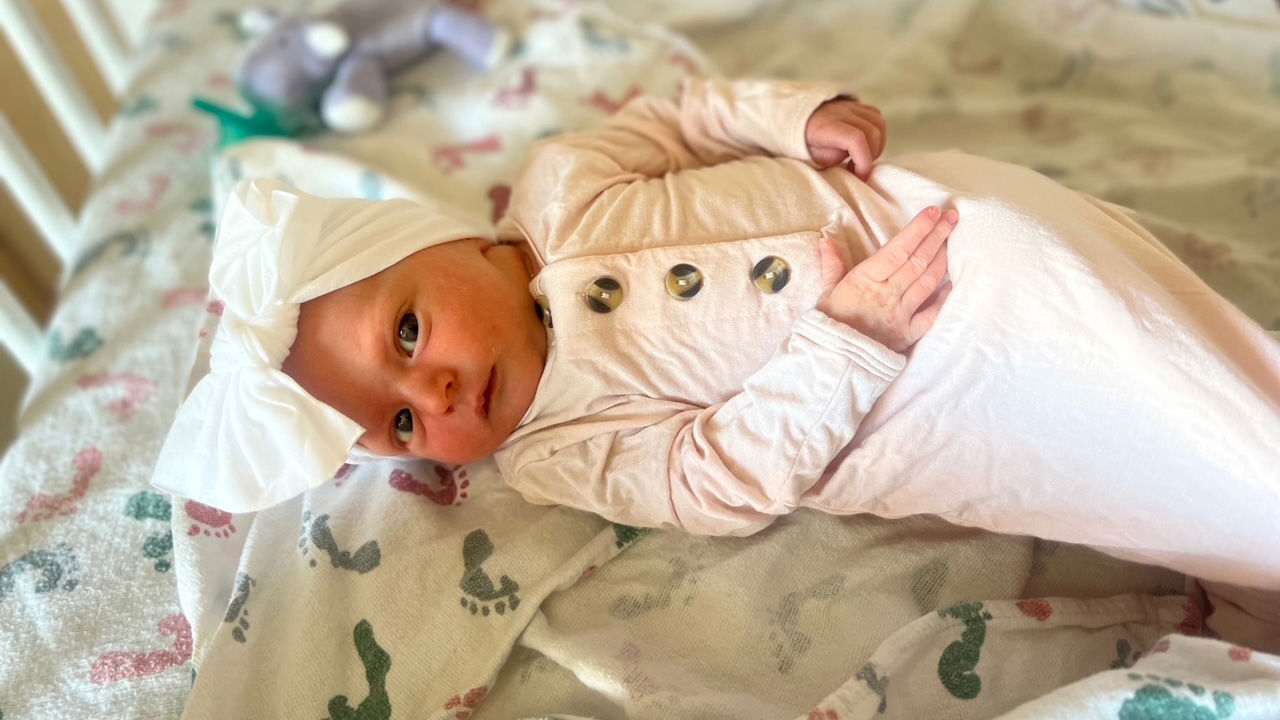- Doctors & Departments
-
Conditions & Advice
- Overview
- Conditions and Symptoms
- Symptom Checker
- Parent Resources
- The Connection Journey
- Calm A Crying Baby
- Sports Articles
- Dosage Tables
- Baby Guide
-
Your Visit
- Overview
- Prepare for Your Visit
- Your Overnight Stay
- Send a Cheer Card
- Family and Patient Resources
- Patient Cost Estimate
- Insurance and Financial Resources
- Online Bill Pay
- Medical Records
- Policies and Procedures
- We Ask Because We Care
Click to find the locations nearest youFind locations by region
See all locations -
Community
- Overview
- Addressing the Youth Mental Health Crisis
- Calendar of Events
- Child Health Advocacy
- Community Health
- Community Partners
- Corporate Relations
- Global Health
- Patient Advocacy
- Patient Stories
- Pediatric Affiliations
- Support Children’s Colorado
- Specialty Outreach Clinics
Your Support Matters
Upcoming Events
Colorado Hospitals Substance Exposed Newborn Quality Improvement Collaborative CHoSEN Conference (Hybrid)
Monday, April 29, 2024The CHoSEN Collaborative is an effort to increase consistency in...
-
Research & Innovation
- Overview
- Pediatric Clinical Trials
- Q: Pediatric Health Advances
- Discoveries and Milestones
- Training and Internships
- Academic Affiliation
- Investigator Resources
- Funding Opportunities
- Center For Innovation
- Support Our Research
- Research Areas

It starts with a Q:
For the latest cutting-edge research, innovative collaborations and remarkable discoveries in child health, read stories from across all our areas of study in Q: Advances and Answers in Pediatric Health.


Colorado Fetal Care Center
Omphalocele
We see more, treat more and heal more kids than any other hospital in the region.

What is an omphalocele?
An omphalocele is a rare abdominal wall defect in which a baby's intestines, and sometimes other organs like the liver, stick outside of the abdomen. There are different sizes and severities of this condition. A small omphalocele is usually when only part of the intestines stick out. A large omphalocele, sometimes called a giant omphalocele, means the hole in the abdomen is large or a sizable portion of the liver sticks out through the abdomen.
With an omphalocele, the organs, usually the intestines and liver, are covered in a thin sac. An omphalocele can cause the abdominal cavity and lungs to be smaller and can also result in organ damage or infection, especially if the sac holding the intestines breaks. An omphalocele increases the risk of death before or during delivery, which is why we strive for early diagnosis and observation.
Hearing that your baby has an omphalocele can feel scary and overwhelming. But the Colorado Fetal Care Center is at the forefront of diagnosing and treating this condition. We perform state-of-the-art omphalocele treatments that help babies live healthy, full lives.
What causes an omphalocele?
A defect in the abdominal wall allows the omphalocele to occur. The cause of this abnormal development is not completely understood but researchers believe it happens during development early in pregnancy. Some genetic conditions can increase the chance of omphalocele. While the cause is unknown, our continued research has helped us to expertly diagnose and treat the condition.'
How common is an omphalocele?
An omphalocele occurs in approximately 1 in every 5,500 live births.
Differences between an omphalocele and gastroschisis
Gastroschisis is another abdominal wall defect. In an omphalocele, the opening that allows intestines to poke through the abdominal wall is at the belly button. In gastroschisis, it is typically to the right of the belly button. Another main difference is that with an omphalocele, the intestines that stick out are covered by a thin sac, whereas with gastroschisis, they are not. This can cause changes in bowel function for babies with gastroschisis.
Babies with an omphaloceles can have other conditions at birth, such as heart or kidney issues or genetic syndromes such as Beckwith-Wiedemann syndrome. Gastroschisis usually occurs by itself without other associated conditions.
Complications of omphalocele
An omphalocele can occur as part of a syndrome (meaning multiple organs are involved) or as an isolated disease (meaning without other abnormalities). Small abdominal wall defects that contain only bowel are associated with an increased risk of genetic abnormalities (changes in the baby's "blueprint").
Other organ complications vary, ranging from single minor abnormalities that are not life-threatening for the baby to multiple complex life-threatening problems that can cause long-term issues other than the omphalocele itself. We strongly recommend genetic testing because multiple studies have shown a high rate of genetic abnormalities with an omphalocele.
What is the impact of an omphalocele on my pregnancy?
During pregnancy, our team focuses on detecting preterm labor and fetal growth restriction (a condition where the baby is not growing enough while in the uterus). Both complications can happen with an omphalocele.
We perform ultrasounds more often in a pregnancy with an omphalocele to assess the baby's growth and the amount of amniotic fluid. In addition, during ultrasounds, we check for any rupture of the omphalocele membrane, which can expose the intestines to amniotic fluid and cause inflammation. We try to deliver the baby as close to full-term as possible.
We only recommend cesarean sections (c-sections) for specific cases, usually when the fetal omphalocele measures 5 cm or larger or if the majority of the liver is outside the baby’s body. Otherwise, we’ll recommend vaginal delivery.
What are the signs and symptoms of an omphalocele?
The primary omphalocele symptom is abdominal organs that stick out of the abdominal wall, which is visible in testing before birth. Pregnant mothers typically don’t feel or notice anything during their pregnancy that would signal their baby has an omphalocele.
How do we diagnose an omphalocele?
We can often detect an omphalocele from a routine fetal ultrasound. Some conditions associated with omphalocele can trigger abnormal results on prenatal (before birth) blood screening tests.
We use a combination of imaging techniques to evaluate your baby while inside the womb with an omphalocele. This includes fetal MRI (to further evaluate the internal organs) and fetal echocardiogram (to evaluate heart structure and function).
If it isn’t detected through tests during pregnancy, it is obvious when the baby is born.
How do we treat an omphalocele?
We treat babies born with an omphalocele differently depending on the size of the opening. Because an omphalocele can affect many organs, we have found that a team approach is best for those diagnosed with the condition. We offer comprehensive counseling and advice for parents with a baby diagnosed with an omphalocele. In addition to maternal-fetal medicine specialists, we work with experts from pediatric surgery, genetics, neonatology, radiology and, if needed, pediatric cardiology.
Omphalocele treatment after birth
Omphalocele treatment depends on how much of your baby’s abdominal organs are outside of the belly at birth. If only part of the intestines are outside or the hole is small, surgeons return them to the abdomen soon after birth and close the opening in the abdominal wall.
If the omphalocele is large and exposes multiple organs, or your baby has breathing problems, physicians usually take a phased approach. In the most severe cases, doctors will take time to allow the body to grow skin over the membrane. We then wait for the baby’s abdominal wall to grow so there is enough muscle to cover the hole. Sometimes we involve plastic surgeons to help provide innovative ways to cover the hole. To get enough muscle coverage to close the hole, we sometimes wait until your baby is 1 to 2 years old to close the hole. Currently, there are no fetal (in utero) interventions offered to treat omphalocele.
Another way to close giant omphaloceles is through a series of surgeries at birth called a Schuster procedure. We only offer this procedure to babies with giant omphaloceles who are clinically doing very well. There are some risks involved with squeezing all the organs back into the abdomen around the time of birth and so we are careful to only offer this to patients that fulfill specific requirements.
Long-term omphalocele survival rates and outcomes
Modern surgery has made life not only possible, but probable, for children born with this condition. The omphalocele survival rate for babies with no additional health issues is 90%. Those with other complications have a survival rate of 70%.
Babies with multiple organs exposed, as well as related issues such as smaller-than-average lungs, can experience ongoing breathing and heart problems. These children require long-term care and monitoring from a multidisciplinary team of specialists, such as the Pulmonary Hypoplasia Clinic.
Why choose us for omphalocele treatment?
Even though an omphalocele is a rare diagnosis, our team has extensive experience caring for it. Because we care for so many families with serious diagnoses, caring for rare conditions is common for us. And everything we do is personalized to your family’s needs.
Once your baby receives an omphalocele diagnosis, we create a plan to address your child’s specific needs and make sure you’re comfortable with the plan. You’ll receive counseling from experts in many different fields, all of whom have expertise in treating babies with an omphalocele. Our fetal care team will carefully monitor your baby’s progress inside the womb as they develop and work with other specialists within our hospital to begin our treatment plan as soon as your baby is born. We can deliver your baby safely within our dedicated Labor and Delivery Unit located within Children’s Hospital Colorado.
Our Colorado Fetal Care Center works closely with our Neonatal Intensive Care Unit (NICU), Pediatric Surgery Department and Urology Department to reach the best results for you and your baby. Our NICU has earned the highest designation — Level IV (four) — and is just steps away from where you’ll deliver the baby, so if your baby’s omphalocele is severe, we can offer life-saving treatments and surgery right away. You and your baby will be in the best hands, quickly.
In less severe cases, your baby will experience specialized NICU care where we’ll monitor the omphalocele and start our treatment plan at the absolute best time in their growth and development. Whether we apply treatment right away or sometime down the road, our experts will be with you every step of the way to help your baby grow up happy and healthy.
After you leave the hospital, our experts will continue to be an important part of your child’s growth and development. We have dedicated clinics that specialize in helping your child meet milestones and continue a healthy life.
Learn more about the Colorado Fetal Care Center, including our latest outcomes and how to find the right fetal care center for you.
Next steps
-
Would you like to learn more about us?
Learn more about the Colorado Fetal Care Center -
Do you have questions about this condition?
720-777-4463 -
Want a second opinion?
Get started

Stories
Charlotte
When Charlotte was diagnosed with an omphalocele, her parents had never even heard of the condition. They feared the most serious complications, but their story revealed many silver linings and an exceptional outcome.
Get to know our pediatric experts.


Sarkis Derderian, MD
Surgery - Pediatric, Surgery, Surgical Critical Care
Patient ratings and reviews are not available Why?

Camila Londono-Obregon, MD
Cardiology, Cardiology - Pediatric, Pediatrics




 720-777-0123
720-777-0123




